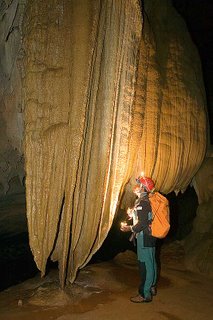09 February, 2007
Atlantic Forest, Twenty Years Later...
Atlantic Forest. The world’s second most threatened tropical forest, that used to live where nowadays 70% of the Brazilians live, from which only about 7% of the original area is left, that has a deforestation rate 2,5 times more intense than the Amazon, that bears one of the globe’s highest biodiversity, and that… is still beautiful!
To me, the last part of the trip through Brazilian ecosystems had a very special taste. After all, it was due to a visit to the caves of PETAR back in 1986, organized by a teacher at the school where I studied, that I decided to turn into a biologist, became fond of working as a naturalist guide and took my first attempts towards the world of nature photography. Yes, today I can say that the whole story of my professional career – and much of my personal interests – arose after that trip. Until 1991, the last time when I had been there, I traveled to PETAR about four times per year organizing itineraries and guiding groups through my good ol’ tour operator Caiguá Turismo Alternativo. And it was in this same region – at Fazenda Intervales – that I developed researches on bats for my Bachelor’s degree.
But leaving good memories aside and coming back to January 2007, on our itinerary we visited the Cardoso Island State Park and PETAR, which together with other conservation units – including Fazenda Intervales – form one of the most significant continuous stretches of Atlantic Forest protected in conservation units, with approximately 120,000 hectares (297,000 acres) and some hundreds of limestone caves.
This was the only part of our whole trip when the rain decided to fall nonstop, messing up some of our activities (and photo opportunities...) but, at the same time, telling us firsthand the meaning of the expression “rain forest”!
Subscribe to:
Post Comments (Atom)





No comments:
Post a Comment